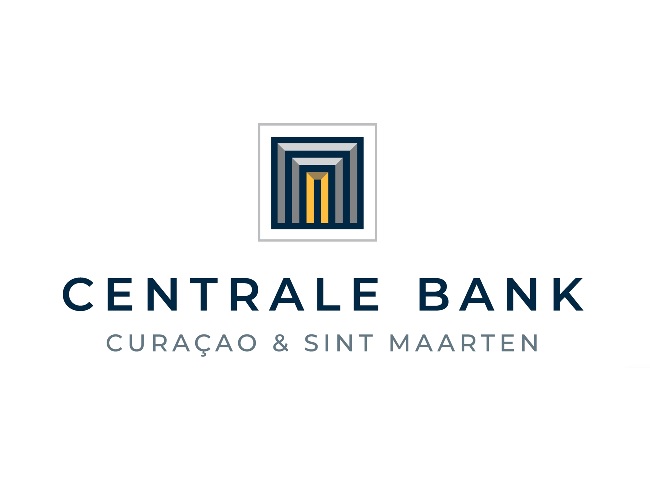Influenced by domestic and global financial market developments
Willemstad / Philipsburg – The Centrale Bank van Curaçao en Sint Maarten (CBCS) has decided to reduce its reserve requirement by 0.50 percentage point to 18.50% while the pledging rate was lowered further from 5.25% to 4.75%. “The decision to adjust monetary policy is anchored by the normalization of economic and monetary conditions across the union. This easing of monetary policy is supported by a solid and stable foreign exchange position and adequate import coverage in the monetary union. In addition, the economies of the monetary union surpassed their pre-pandemic levels driven primarily by significant improvements in the foreign exchange generating capacity of the tourism sector”, stated executive director, Dr. Jose Jardim. The decision to lower the pledging rate is also aligned with an anticipated further reduction of the federal funds rate in December 2024. As uncertainties persist, the Monetary Policy Committee (MPC) of the CBCS will continue to monitor the domestic and international economic developments closely, particularly the key indicators for monetary policy in the union and make policy adjustments as needed.
According to the latest estimate, the current account deficit of the balance of payments as a percentage of GDP dropped from 15.8% in 2023 to 15.4% in 2024. The underlying factors behind the lower deficit, such as an increase in net current transfers from abroad, remain in line with the September forecast. However, the deficit is higher than in the previous forecast due to a stronger
than-anticipated rise in imports. The higher import bill in 2024 was primarily driven by increased domestic demand, particularly due to robust investment growth across the monetary union. In addition, oil imports rose due to a combination of higher average international crude oil prices and more volumes purchased. Exports also grew, albeit at a slower pace than imports, driven primarily by higher foreign exchange receipts from the tourism and transportation sectors.
Despite the current account deficit, gross official reserves are expected to increase in 2024 driven by strong inflows from external financing and capital transfers. Up to November 18, 2024, gross official reserves grew by NAf.60.8 million. The rise in reserves was mainly attributable to the transfers from abroad by pension funds, the World Bank in connection with the reconstruction of Sint Maarten, and the Dutch Ministry of Finance. However, the net purchase of foreign exchange and withdrawal of dollar deposits by the commercial banks (including those in Bonaire), combined
with transfers abroad by other financial institutions moderated the increase in gross official reserves.
The import coverage rose from 4.5 months at the end of 2023 to 4.6 months in November 2024 and is expected to remain at that same level in December 2024, which is still well above the norm of three months. Meanwhile, the liquidity of the commercial banks, measured by their current account balances with the CBCS, increased by 5.1% up till mid-November, driven by the transfers by pension funds, other financial institutions, and the governments of Curaçao and Sint Maarten from their accounts at the Bank to their accounts with the commercial banks.
After raising the reserve requirement by 1.00 percentage point in February 2020, the CBCS has maintained the percentage unchanged at 19.00% due to the excess liquidity in the banking system. “However, with the monetary union’s foreign exchange-generating capacity, particularly in the tourism sector, having improved and given the solid foreign exchange position and adequate import coverage, the CBCS has decided to reduce the reserve requirement by 0.50 percentage point to 18.50%, effective 16 December 2024”, Dr. Jardim explained. The reserve requirement is a monetary policy tool that obliges commercial banks to hold a certain percentage of their deposit base in a blocked account with the CBCS which does not pay interest. Hence, the reserve requirement reduces the commercial banks’ liquidity as these funds are not available for transaction purposes.
The CBCS also decided to adjust the pledging rate for the second time this year, lowering it from 5.25% to 4.75%. Following two reductions in September and November 2024, market expectations indicate that the U.S. Federal Reserve (Fed) will cut its policy rate further in December. “Given the likelihood of another cut in the Fed funds rate, interest rates in the international money market are expected to gradually decline over time. Consequently, this will influence the interest rates in the money market of the monetary union of Curaçao and Sint Maarten, considering the peg of the NAf. to the U.S. dollar and justifying the reduction of the pledging rate”, Dr. Jardim stated.
Furthermore, CBCS will continue to offer attractive rates on its weekly auctions of CDs with the aim of holding more bank liquidity domestically to support the preservation of a solid foreign exchange position”, Dr. Jardim concluded.





























